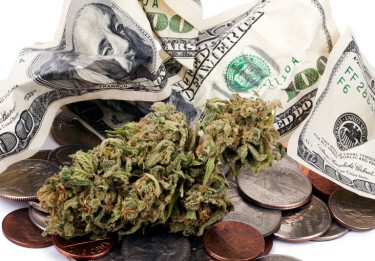Why Does Weed Cost What It Does?
In the pre-gentrification era of marijuana, the sale price of weed was solely determined by the seller. They considered various factors, such as the expenses incurred in getting the illicit product, the hazards of conducting business, and the level of demand for their product. Naturally, every dealer touted their marijuana as top-notch and justified their exorbitant pricing. However, consumers could not verify the product quality they were purchasing.
With the gradual spread of legalization nationwide and the federal government mulling over the possibility of making it legal nationwide, the balance of power between cannabis retailers and buyers is evening out, resulting in more predictable pricing. With the wealth of information now available to consumers about different cannabis strains and their producers, buyers can make informed decisions about their purchases at local cannabis shops. As a result, pricing is becoming more transparent and less arbitrary, grounded in straightforward concepts. It's a positive development for buyers and sellers in the evolving cannabis market.
Quantity: The First Factor to Consider
The fundamental aspect of comparing two options is often the quantity, which is no different when it comes to cannabis. Generally, marijuana is sold in a full ounce, half an ounce, a quarter of an ounce, an eighth of an ounce, and grams. When it comes to pricing cannabis, most shops use a combination of metric and imperial measurement systems. For larger purchases, prices are quoted in ounces and partial ounces, while grams are used for smaller buys.
In the United States, the average cost per ounce of cannabis varies significantly, ranging from $250 - $500 just a year ago, to now $125 to $200 an ounce. Numerous factors contribute to this price discrepancy, with the quality of marijuana being the primary influencer. Recent price crashes have forced legal ounces for sale for $80 in Michigan and grams for only $4 in Oregon.
Quality Matters Too
The average prices mentioned above reflect the medium-quality cannabis available in the market. However, to make an accurate comparison, it is crucial to consider the product's quality. The difference in pricing between the two shops nearby is probably mainly due to variations in the quality of the cannabis they offer.
Determining the quality of cannabis involves considering several factors, but one of the most significant differentiators is the growing method. Organic, indoor cultivation styles are typically pricier than outdoor, mass-produced, or imported varieties. It's akin to comparing a craft beer from a small brewery to a mass-produced beer from a major manufacturer - the former is more expensive due to the high-quality ingredients and specialized production methods involved.
Other Factors To Consider
The State's Legal Status
In states where cannabis remains illegal, consumers must depend on dealers to supply them with the desired product, putting themselves at considerable personal risk. In such situations, as previously stated, consumers cannot regulate the substance's price and quality. Attempting to compare cannabis product prices between illicit dealers is not advisable if you wish to continue to purchase from them.
Meanwhile, in states where recreational marijuana is legalized, the market is flooded with numerous competitors, leading to intense competition, ultimately driving down prices in response to consumer demand.
Location
Growing cannabis outdoors is impossible in all climates, as the plant thrives in stable warmth, averaging around 80 degrees Fahrenheit during the day. Fluctuations in temperatures or excessively high temperatures above 88 degrees Fahrenheit or below 60 degrees Fahrenheit regularly hinder the plant's growth and result in a lower-quality plant with less THC.
In Alaska and Northeastern regions, marijuana is typically cultivated indoors due to the harsh outdoor climate. However, indoor cultivation can be pretty expensive for growers, ultimately leading to higher prices for consumers.
Taxes
The lucrative prospect of generating tax revenue has not eluded the authorities in states that have legalized marijuana. Apart from imposing cannabis-specific "sin taxes," sales tax is also typically levied, often at a higher rate than other consumer products. For instance, Colorado sets a sales tax rate of 2.9 percent, but the rate for marijuana is a whopping 15 percent.
Taxes are imposed on consumers and legitimate dispensaries throughout the production and sales cycle. Such businesses are obligated to pay taxes on their products and services. In contrast, growers must pay taxes on production items such as light bulbs, packaging materials, transportation of the final product, and more.
Unfortunately, due to federal tax laws that prohibit tax deductions for companies engaged in the trafficking of illegal substances, cannabis businesses cannot avail themselves of many standard business deductions, leading to an increased cost for consumers.
Retail operations
The place of purchase also plays a vital role in determining the price of cannabis. For instance, a local corner shop may have relatively low overhead expenses compared to high-end bud dispensaries on a bustling main street, ultimately affecting the consumer's price.
Maintaining well-trained and fairly compensated staff, clean and welcoming premises, and keeping the lights on all add to the cost of selling cannabis. Legal dispensaries are bound by packaging and labeling regulations, ensuring consumers can access information about the product's source, ingredients, and production parameters. Given that cannabis is intended for consumption, it's crucial to clearly understand what one is ingesting, making the additional cost worthwhile.
Demand and Supply
Competition within a specific geographic area can be a crucial factor in determining the price of cannabis, especially regarding the cost per gram. The fundamental economic principle of supply and demand holds that prices tend to rise when the demand for a product surpasses the available supply. In contrast, prices tend to decrease when a product is in surplus.
Conclusion
Several factors, including geographic location, regulations, competition, and quality, influence the price of cannabis. Legalizing cannabis in several states has created a growing market that has attracted many participants, including growers, retailers, and consumers. However, the high taxes and regulatory requirements imposed on cannabis businesses add to the cost of production and sales, making it challenging for businesses to keep prices low.
Nonetheless, competition remains vital in shaping the cannabis market and driving prices down. As the market continues to expand and evolve, we expect to see more innovation, differentiation, and competition. This could result in better products, better prices, and a healthier, more vibrant cannabis market.








